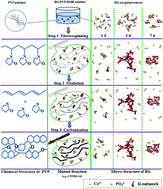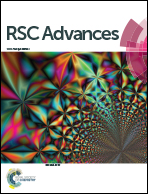Regulating micro-structure and biomineralization of electrospun PVP-based hybridized carbon nanofibers containing bioglass nanoparticles via aging time
Abstract
The hybrids of bioactive glass-ceramic (BG) decorated carbon nanofibers (CNFs) have drawn wide interest as bone repairing materials. Herein, hybridized CNFs were produced from electrospinning the mixture solution of polyvinylpyrrolidone (PVP) and BG sol–gel precursors, followed by preoxidation and carbonization. Choosing 45S-type BG (mol%: 46.10% SiO2–41.48% CaO–12.42% P2O5) as the model, the interaction of BG precursors with PVP and the micro-structural evolution of CNF/BG composites were systematically evaluated in relation to aging times (1–7 days) of BG precursor solution. With aging time prolonging, BG precursors underwent morphological changes from small sol clusters with a loosely and randomly branched structure at 1 day, to a fully developed Si-network structure at 3 days, and finally to a dense Si-network at 7 days. On one hand, it showed continuous increase in network linking degree. On the other hand, the gel particles underwent the process of size increase and subsequently decrease. This directly influenced the miscibility between BG precursors and PVP in solution, and the surface morphology of CNF/BG composites. At short aging times, the sol–gel solution of BG precursors mixed uniformly with PVP and the resulting BG nanoparticles were less likely to migrate toward the fiber surface. With the aging time prolonging, the phase separation between BG precursors and PVP facilitated more BG nanoparticles to form on the fiber surface. Calcium ions were found to be able to interact with carbonyl groups in PVP, while phosphorus element would be lost gradually depending on aging time, which led the CaSiO3 formed in the final CNF/BG changing from a weak to strong crystal state along with longer aging time. By soaking in simulated body fluid, it was found that the CNF/BG composites prepared from BG precursor sol–gel solution with 7 day aging demonstrated the fastest apatite deposition, which was ascribed to those abundant BG nanoparticles on the fiber surface having exposed numerous nucleation sites for the apatite deposition. Promisingly, CNF/BG composites developed from electrospinning and carbonization of PVP/BG sol–gel mixtures were envisioned good choices for bone repairing.


 Please wait while we load your content...
Please wait while we load your content...